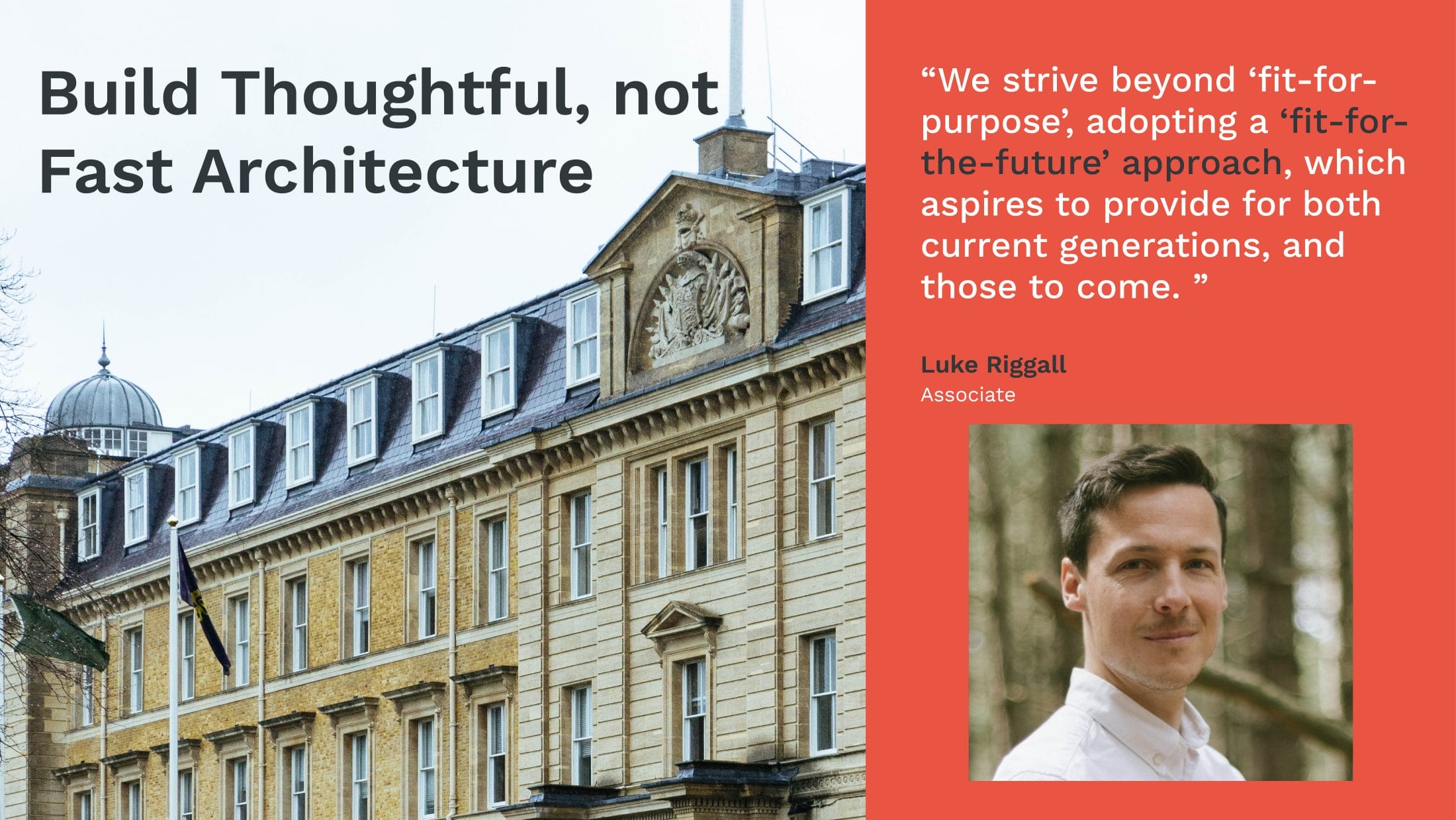
Continuing our spotlight series, Luke Riggall, Associate Architect based in our London studio, shares his view on the responsibilities we have as a profession, as custodians of the built environment, to look beyond the immediate needs of today and consider a long-term perspective.
“The creation of robust, considered projects enables ease of maintenance and enhancement over time, while improving the lived experience for users.”
Historic buildings are an interesting reference point; intended as a legacy from conception and constructed with a permanence due to the material technology of the time. Within progressive society, technology enabled more efficiency but also encouraged a disposable culture craving the next upgrade. Perhaps there was a point in history, where we unlearnt to be concerned about robustness, about aging gracefully and about potential for future adaptation?
To “build” is a commitment in material, intellect and energy which is subsequently difficult to reverse. We must apply a depth of thought to design and construction to ensure every project has the best chance to endure.
Industry continues to accelerate and build faster but at what cost? The general pattern is to build quickly, provide minimal maintenance and then demolish to make way for more of the same. There seems to be little accountability for robustness, maintenance, and end of life considerations. Surely, we must break this cycle and prevent generational churn in the built environment, towards a more sustainable approach?
Industry should strive for higher standards; to do more with the limited resources available.
If we can invest more upfront in material quality, intellect and financial resources it will reduce liabilities over the whole life of an asset. We advocate for better forward planning and flexibility to mitigate against an unknown future. Together this will ensure minimal environmental impact and provide sustainable growth that replenishes, not consumes, as we continue to rectify the oversight of generations before. Build light for disassembly or build heavy for permanence; both approaches have a place, but we must make the decision consciously and for the right reasons.
As Regional Defence Lead at HLM, I have seen the clear benefit to both users and the wider environment that comes from capital investment for enhanced infrastructure. The creation of robust, considered projects enables ease of maintenance and enhancement over time, while improving the lived experience for users.
We strive beyond ‘fit-for-purpose’, adopting a ‘fit-for-the-future’ approach, which aspires to provide for both current generations, and those to come.
So, we must look beyond to the horizon, to what the built environment could become to replenish and not consume. We must move towards long-term thinking, consider responsibility to every action we take, and restore our perspectives to a balance of “now” and “then”. Build thoughtful, not fast architecture.



